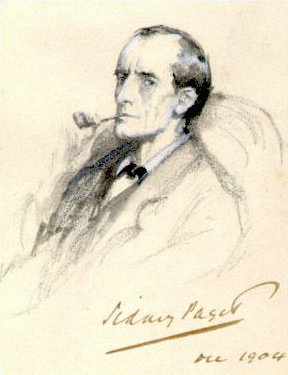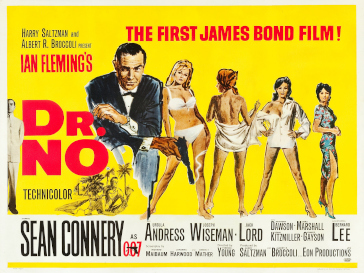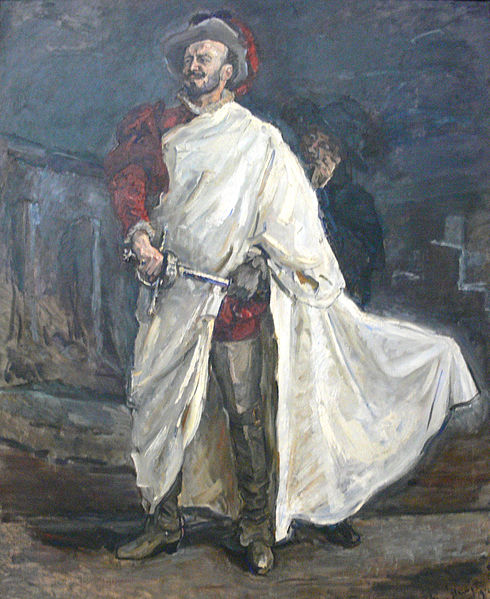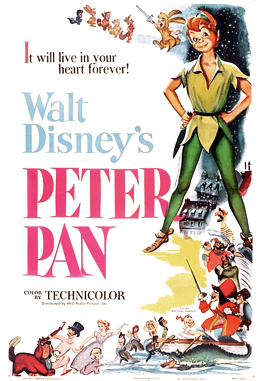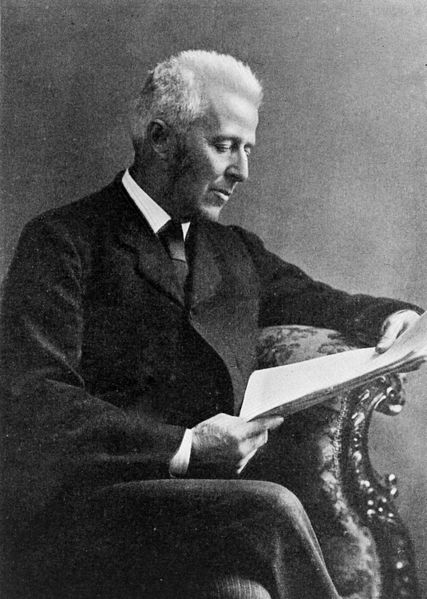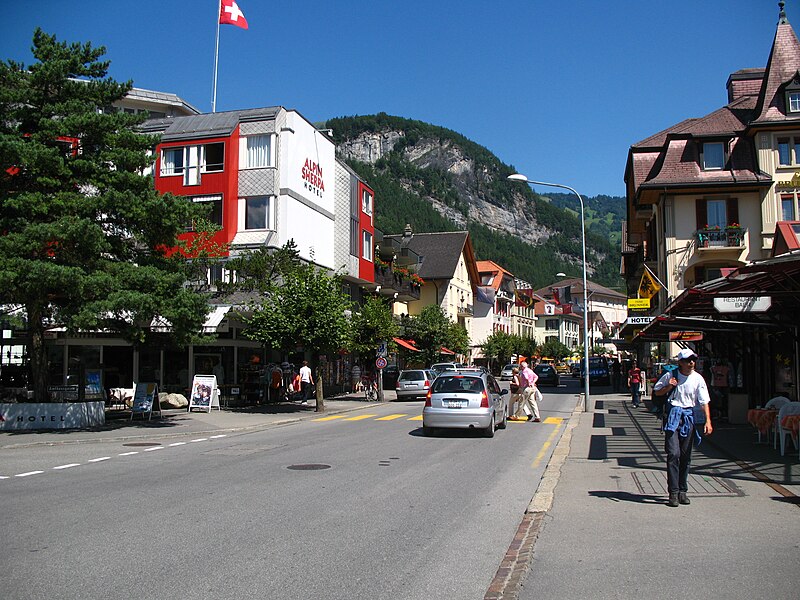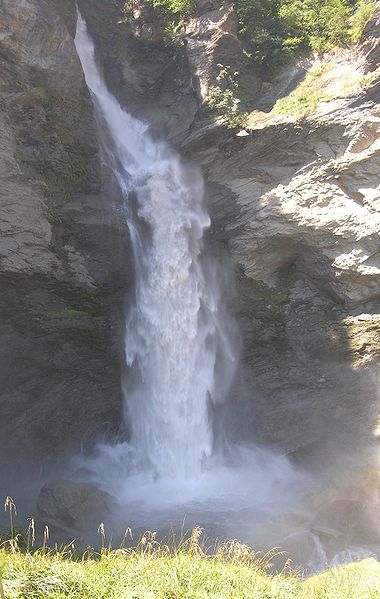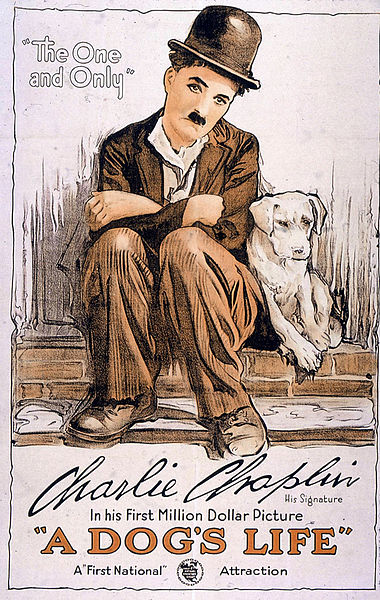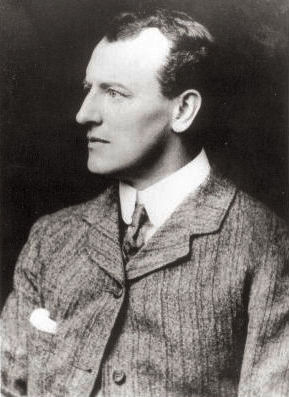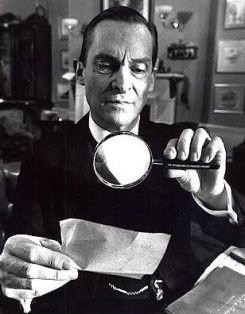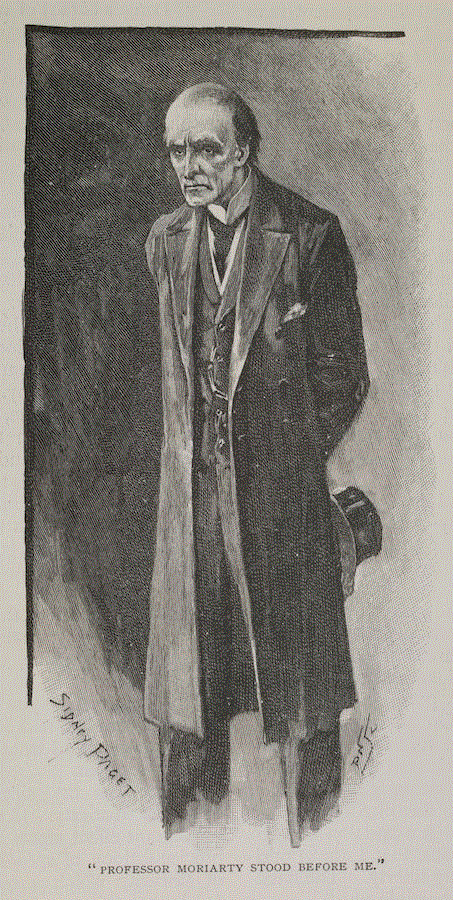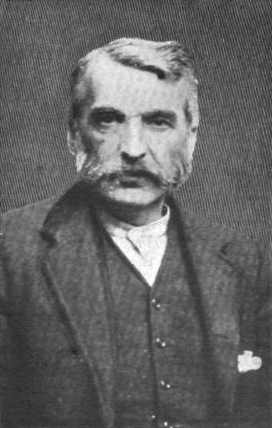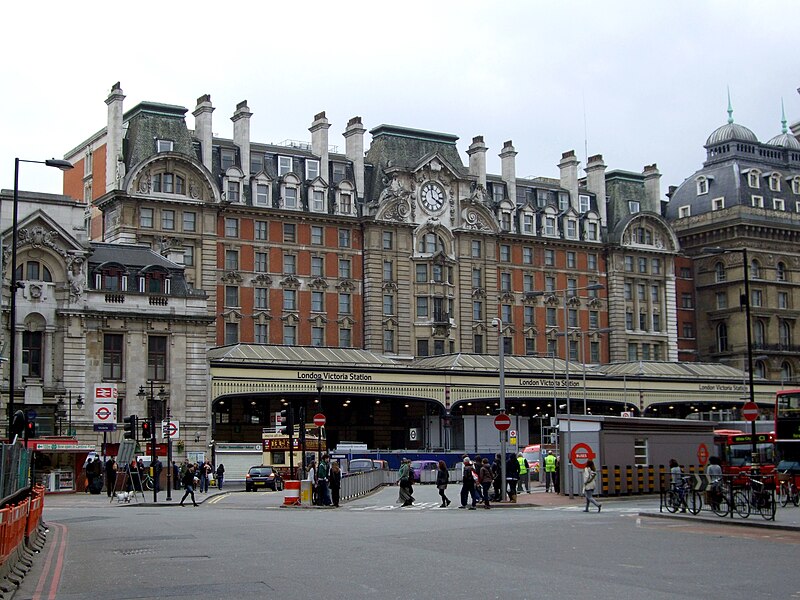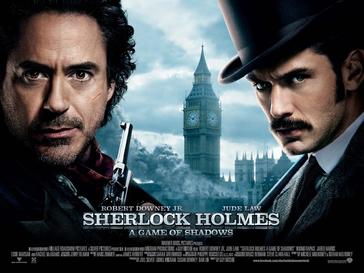Landschlacht, Switzerland, 17 May 2017
They almost have lives and yet we cannot forget them, for they haunt us in the worlds of literature, film, TV, advertising and video games.
Ours is a world inhabited by Sherlock Holmes and Indiana Jones, Wonder Woman and Darth Vader, Santa Claus and Cinderella, James Bond and Harry Potter.
They exist as permanent parts of our culture and yet they have never existed as living breathing people.
They are all around us.
They are our hopes and fears, our constant companions, our signposts in our rites of passage.
They are us, for we have created ourselves through them.
And we recognize these characters within ourselves.
We all know Cassandra for whom the half-full glass is always half-empty, Scrooge who derives pleasure from wealth, Don Juan who stalks every woman and Peter Pan who will never grow up.
The basic characteristics of humanity have become the fictional characters that shape that humanity.
Southsea, Hampshire, England, 1887
Sir Arthur Ignatius Conan Doyle, MD, was a Scotsman, born in Edinburgh on 22 May 1859, the eldest of 10 children, to a Scottish civil servant/occasional artist father and an Irish mother.
Charles Doyle was prone to fits of epilepsy and bouts of depression and alcoholism.
Mary, despite her struggles to maintain a large family on a meagre income, would tell her children tales of history filled with high adventure and heroic deeds.
In order to help Arthur escape his depressing homelife, Mary saved enough money to send him to Stonyhurst College, a strict Jesuit boarding school in an isolated part of Lancashire.
It was at Stonyhurst that he encountered a fellow pupil called Moriarity – a name that Arthur would use to great effect later.
Arthur left Stonyhurst in 1875 and after studying a further year with the Jesuits in Feldkirch, Austria, he surprised his family by choosing to study medicine at Edinburgh University.
During his time at the University (1876 – 1881), Doyle encountered Dr. Joseph Bell, whose method of deducing the history and circumstances of his patients seemed magical.
Bell was the model and inspiration for Sherlock Holmes.
After graduating in 1882, Doyle became a partner in Plymouth, but the partnership soon disintegrated and Doyle set up a practice of his own in Southsea.
By this time Doyle had already tried his hand at writing fiction and had several short stories published, but it was while at Southsea that he made a more determined effort to achieve success as an author.
As he slowly built up his medical practice, Doyle toyed with the idea of creating a detective story in which the protagonist solved a crime by deductive reasoning in the manner of Dr. Bell.
“Reading some detective stories, I was struck by the fact that their results were obtained in nearly every case by chance.
I thought I would try my hand at writing a story in which the hero would treat crime as Dr. Bell treated disease and where science would take the place of romance.”
This idea materialised in the form of the novel A Study in Scarlet – writtten in only a few weeks -and the Sherlock Holmes legend was born.
Following A Study in Scarlet‘s publication, Doyle turned his attention to historical fiction – his first love, inspired by his mother’s stories and his admiration for the works of Sir Walter Scott.
The result was Micah Clarke (1889), a tale based on the Monmouth Rebellion.
(The Monmouth Rebellion, or the West Country Rebellion, was an attempt by James Scott, Duke of Monmouth, to overthrow English King James II in 1685.)
Micah Clarke was a great critical and financial success and it was this book – and not the Sherlock Holmes stories – that convinced Doyle that his future lay in writing.
The US-based Lippincott’s Magazine commissioned a second Sherlock Holmes novel in 1890 and Doyle produced The Sign of Four in less than a month.
Then Doyle approached the Strand Magazine:
“It had struck me that a single character running through a series, if it only engaged the reader, would bind the reader to the magazine.”
In 1891 the Strand Magazine began the Sherlock Holmes series of 12 short stories (later collected and known as The Adventures of Sherlock Holmes) and the public began to embrace the detective.
Within six months of the Baker Street detective’s first appearance in the Strand, in A Scandal in Bohemia, the main selling point of the magazine was each new Holmes adventure.
In 1891, Doyle – married since 1885 – moved from Southsea to London to be closer to the literary world.
Despite the success of the first series of Holmes tales, Doyle quickly became bored with his creation, and although Doyle succumbed to the offer of an increased fee for a second series, he was determined that this series would be Sherlock’s last.
Doyle wanted to spend more time writing more historical fiction, which he saw as a more worthy pursuit and one that would gain him greater recognition as a serious writer.
Doyle wrote to his mother in November 1891:
“I think of slaying Holmes….and winding him up for good and all.
He takes my mind from better things.”
34-year-old Doyle came to Switzerland with his wife in August 1893 to give a series of talks in Lucerne.
Perhaps it was his final school year spent with the Jesuits in Feldkirch, Austria, that gave Doyle a taste for the Alps.
Unlike his wife Louise Hawkins who was in constant ill health, Doyle was a sporty doctor.
He has seen skiing in Norway and imported one of the first pair of Norwegian skis to Davos.
Doyle scaled the Jacobshorn in the Albula Range and then tackled the Maienfelder Furka Pass between Davos and Arosa.
Doyle wrote up his travels for the Strand:
“But now we had a pleasure which boots can never give.
For a third of a mile we shot along over gently dipping curves, skimming down into the valley without a motion of our feet.
In that great untrodden waste, with snowfields bounding our vision on every side and no marks of life save the tracks of chamois and of foxes, it was glorious to whizz along in the easy fashion.”
Doyle predicted that “the time will come when hundreds of Englishmen will come to Switzerland for a skiing season.”
Time has proved him right.
Arthur and Louise discovered the village of Meiringen in the Bernese Alps, famous for the nearby Reichenbach Falls.
The Doyles were shown the Reichenbach Falls by their host Sir Henry Lunn, of the Park Hotel du Sauvage, who suggested to Arthur that he “push him (Holmes) over the falls.”
The Reichenbach Falls are a series of waterfalls on the Reichen Stream – a tributary of the Aare River – in the Bernese Highlands, 2 km south of the town of Meiringen and 25 km east of Interlaken.
The Falls have a total drop of 250 metres / 820 feet and are one of the highest waterfalls in the Alps and among the most spectacular in Europe.
They were painted by the English Romanticist painter J. M. W. Turner in 1804.
Doyle describes the Falls in The Adventure of the Final Problem:
“It is, indeed, a fearful place.
The torrent, swollen by the melting snow, plunges into a tremendous abyss, from which the spray rolls up like the smoke from a burning house.
The shaft into which the river hurls itself is an immense chasm, lined by glistening, coal-black rock, and narrowing into a creaming, boiling pit of incalculable depth, which brims over and shoots the stream onward over its jagged curtain of spray hissing forever upwards, turn a man giddy with their constant whirl and clamour.
We (Holmes and Watson) stood near the edge peering down at the gleam of the breaking water far below us against the black rocks, and listening to the half-human shout which came booming up with the spray out of the abyss.”
It would be here that Doyle would kill off Holmes, getting Doyle’s writing career back on track.
The Reichenbach Falls was a place that would “make a worthy tomb for poor Sherlock, even if I buried my banking account along with him.”
But how to let Holmes go?
Doyle decided to let Holmes go down in a blaze of glory, having rid the world of a criminal so powerful and dangerous that any further task would be trivial by comparison.
“I (Holmes speaking) think I may go so far as to say, Watson, that I have not lived wholly in vain.
If my record were closed tonight I could still survey it with equanamity.
The air of London is the sweeter for my presence.
In over a thousand cases I am not aware that I have ever used my powers upon the wrong side.
Of late I have been tempted to look into the problems furnished by nature rather than those more superficial ones for which our artificial state of society is responsible.
Your memoirs will draw to an end, Watson, upon the day that I crown my career by the capture or extinction of the most dangerous and capable criminal in Europe.”
Doyle would create Professor James Moriarty simply to provide a fitting opponent with whom his hero could grapple during his goodbye to the world in The Final Problem, for killing off Holmes was exactly the final problem that Doyle had.
Doyle did not want his literary legacy to be only that of his creation Sherlock Holmes.
Meiringen, Switzerland, 13 May 2017
Weeks have gone by since I have written my blog.

From mid-April to mid-May much has felt wrong.
I felt poorly, both in mind and body, and worked little as a teacher, a Barista or as a writer, for as I have previously written I occasionally find myself battling depression.
(See Taming the black dog of this blog.)
But this was complicated by a touch of the flu and a touch of mild thrombosis in my left leg causing it to swell like a red Zeppelin airship.
As regular readers of my blog or Facebook know, Switzerland has not been favourable to me personally or professionally since I moved here back in 2010.
I found myself lacking motivation to devote my best efforts to improving my situation and I felt dissatisfied for myself for feeling this way.
A weekend in hospital and a week enforced confinement at home gave me opportunity to think.
Teaching no longer gives me the fulfillment it once did and Starbucks will always remain a mere end to a means of maintaining a steady income.
I thought backwards in time to events in my life that lead me here and asked myself what inspired me then and still inspires me now.
And what I have enjoyed the most has been travelling and writing.
My travels, like most people’s travels, have been restricted over the years of the constraints of both time and income.
My writing has been hampered by both a lack of discipline and an awareness of how to generate income from its practice.
I felt discouraged.
The health problems ended employment in Winterthur and caused employers in St. Gallen to reflect upon the wisdom of engaging my services.
Over the past few years my wife has made it a point to take me away from Landschlacht on the weekend including or closest to my birthday.
(For example, last year we went to Vevey to see the newly opened Charlie Chaplin Museum, and the year before that we visited Jungfrau and the Top of Europe…both topics of future blog posts…)
I spoke of a desire to see the Reichenbach Falls where Sherlock Holmes “fatally” grappled with Professor Moriarity, for I had seen and enjoyed the third and final episode of the second season of the TV series Sherlock – a modern version of the detective with Benedict Cumberbatch as Holmes – wherein Holmes falls from the London roof of the Reichenbach building – and I wanted to see for myself the story location not too far removed in distance from my home.
I had heard that Meiringen has a Sherlock Holmes Museum – one of two in Switzerland, the other in Lucens near Lausanne – and I wanted to see both the Falls as well as the Museum.

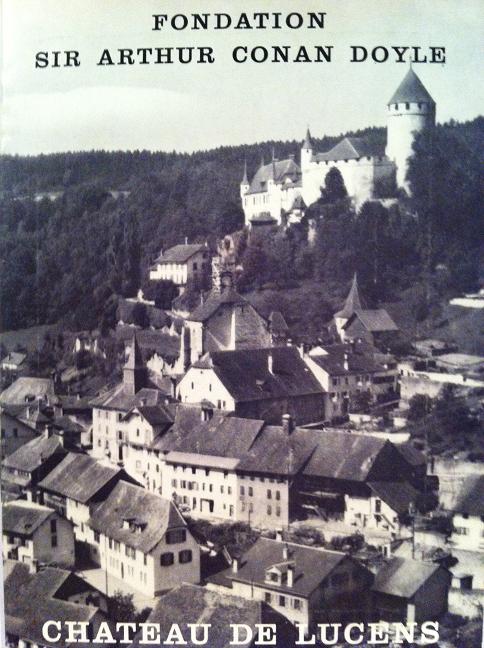
(Meiringen has another claim to fame besides the Reichenbach Falls:
It is also known for its claim to have been the place where the meringue was first created.)
There are a number of ways to reach Meiringen:
Meiringen is served by trains: the Brünig line (a narrow gauge railway connecting Interlaken to Lucerne), an hourly InterRegio service between the aforementioned cities and it is also the endstop of an hourly Regio service from Interlaken as well as the local Meiringen – Innertkirchen railway which traverses through the Aareschlucht (Aare Gorge).
A six-minute bus ride or a twenty-minute walk away in nearby Willingen is the lower terminus of the Reichenbachfall funicular which links the village to the Reichenbach Falls.
While on the opposite side of the Meiringen valley, a cable car runs to Reuti, from where a system of gondola lifts runs to Planplatten (2,200 metres / 7, 200 feet) via Mägisalp.
Nearby is the Meiringen Air Base, one of three main air bases of the Swiss Air Force, in Unterbach, which operates mainly F/A-18 Hornet fighter jets.
The wife and I travelled by car from Landschlacht (on the Lake of Constance) bypassing Zürich and Bern, a journey of approximately three hours.
Meiringen (population nearly 4,700) sits quietly in an outdoor wonderland laced with hiking and cycling paths that crisscross wild valleys, waterfalls and high alpine moors, but the inhabitants of Meiringen remain eternally grateful to Doyle and Holmes for ensuring the worldwide fame of Reichenbach Falls and the promotion of tourism to their town.
There are a number of tourist accommodations available in Meiringen: the smart, modern Hotel Sherlock Holmes, the Alpin Sherpa Hotel, the Hotel Alpbach, and, of course, Doyle’s old haunt, the Park Hotel du Sauvage.
Appropriately, my wife booked us in the Hotel Sherlock Holmes, with carpets bearing an image of Holmes in deerstalker cap, an excellent restaurant, a swimming pool and wellness centre on the 4th floor.

We arrived mid-afternoon and quickly set out for the Falls as the weather forecast warned of the possibility of rain over the weekend and we hoped to see the Falls before bad weather denied us the chance.
I was looking forward to this weekend as I felt that maybe a change of scenery would get me out of the funk I had been in and the exercise might do my body good as well.
The signposted Sherlock Holmes Path leads from the Meiringen train station through the town, crosses the Aare River and leads away from the funicular to climb the slopes of the summit of the Falls.

The wife, 11 years my junior, was, as usual, in fine form, while I, who only the day before had ended my homebound convalescence, slowly, breathing heavily, made my slow progress upwards behind her.
Thoughts of Doyle and Holmes were much upon my mind.
Here Doyle ended his most famous character’s “life”.
Here Holmes would battle his greatest adversary to ensure that Moriarity could cause no more harm to others.
But why was I here?
Was I too searching for a solution to my final problem?
Was I seeking a solution to how to end my days with more dignity than I had previously known?
Doyle did not want to known as only the writer of detective stories.
I do not want to be known only as an occasionally motivated/motivating freelance teacher and part-time Barista, but to be remembered as leaving the air “sweeter for my presence”.
Moriarity said to Holmes:
“I am quite sure that a man of your intelligence will see that there can be but one outcome to this affair….
…You have worked things in such a fashion that we have only one recourse left.”
But does there remain a sense of inevitability to the present course of my life?
Or should I tell myself like Holmes responded:
“Danger is part of my trade.”?
Perhaps I need to risk more and follow the spur of my heart, rather than simply do the appropriate things that have sustained my income but at the sacrifice of my spirit?
Reichenbach Falls, Switzerland, 4 May 1891
“It was upon the 3rd of May that we (Watson writing about Holmes and himself) reached the little village of Meiringen, where we put up at the Englischer Hof (the Hotel Park du Sauvage), then kept by Peter Steiler the elder.
Our landlord was an intelligent man and spoke excellent English, having served for three years as waiter at the Grosvenor Hotel in London.
At his advice, upon the afternoon of the 4th we set off together with the intention of crossing the hills and spending the night at the hamlet of Rosenlaui.
We had strict injunctions, however, on no account to pass the falls of Reichenbach, which are about halfway up the hill, without making a small detour to see them.”
So, who were Watson and Holmes, and why are they in Switzerland?
As previously mentioned, one of the characters from whom Doyle framed his hero Sherlock Holmes was his old teacher at Edinburgh University’s medical school, Dr. Joseph Bell (1837 – 1911).
Doyle recalled that Bell “often learned more of the patient by a few quick glances than I had done by my own questions.”
Other sources of inspiration for the character of Holmes were:
- Edgar Allan Poe’s C. Auguste Dupin from Poe’s Murders in the Rue Morgue, for the idea of the locked room mystery and solving crimes by clever deduction
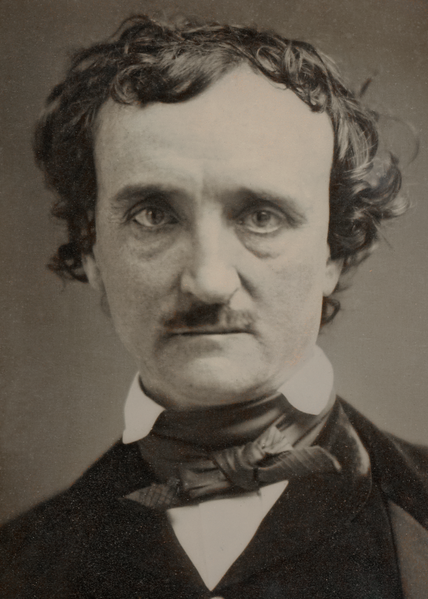
- Emile Gaboriau who wrote about a detective using forensic science and crime scene investigation
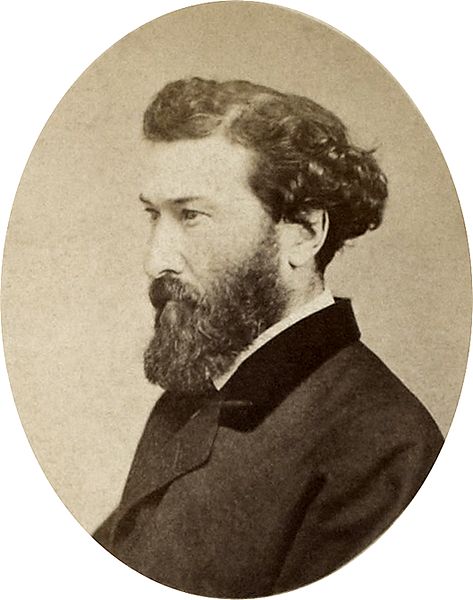
- Wilkie Collins’ detective inspired Holmes’ appearance

- Sir Henry Littlejohn who, as the Chairman of Medical Jurisprudence at the medical school as well as police surgeon and medical officer of health in Edinburgh, provided Doyle with a link between medical investigation and the detection of crime

- Francis “Tanky” Smith, a policeman and master of disguise who went on to become Leicester’s first private detective
- Maximilien Heller, a depressed, antisocial, polymath, cat-loving and opium-smoking Paris-based detective by French author Henry Cauvain
- According to Doyle, Holmes had sharp, angular features, was tall and thin, yet wiry and athletic, with reserves of strength that enabled him to cope relatively well in any physical tussle.
The popular image of Holmes wearing a tweed suit, a cape and a deerstalker cap, and carrying about his person his trademark cane and pipe, were created by Sidney Paget, the first illustrator of the Holmes stories in the Strand Magazine.
Doyle gave away few details of Holmes’ life, but careful reading of his works can allow the reader to deduce that Holmes was born in 1854, attended a university, and had an older brother named Mycroft.
After university, Holmes moved to London and took up residence in Montague Street, near the British Musuem.
He had connections at St. Bartholomew’s Hospital, which allowed him to conduct his experiments in the lab there, even though he was neither student nor staff.
By the time Holmes met Watson in 1881 and moved into 221B Baker Street with him as his co-lodger, he had already developed his business as a consulting detective.
Holmes was a man with exceptional powers of observation and reasoning, a master of disguise possessed of an uncanny ability to establish the truth.
In Doyle’s The Adventure of the Mazarin Stone, Holmes declares:
“I am brain, Watson.
The rest of me is a mere appendix.”
Holmes was skilled in martial arts and was quite capable with a sword.
Dr. John Watson was the narrator of all but four of the Sherlock Holmes tales.
Watson was the essential witness to Holmes’ brilliance and his tireless biographer.
Watson was the warm-hearted and good-humoured everyman to Holmes’ cool pragmatist.
Watson was loyal, steadfast and utterly dependable.
He was a middle-sized, strongly built man with a square jaw, a thick neck and a moustache.
Watson was an army-trained crack shot and was once athletic, playing for the famous Blackheath Rugby Club, but by the time he met Holmes he had developed a war injury and a taste for wine and tobacco.
It is suggested that Watson was born in 1853.
Watson qualified as a medical doctor at St. Bartolomew’s Hospital in London in 1878.
After qualifying, Watson signed up as an army surgeon with the 5th Northumberland Fusiliers and was posted to the Second Afghan War (1878 – 1880), where he was shot at the Battle of Maiwand in July 1880.
While in hospital recovering, Watson became ill with typhoid and was sent home with his health “irretrievably ruined” and was discharged from the army with a meagre pension.
With no family to turn to, Watson was left adrift in London.
It was at this low point that Stamford, Watson’s old friend from medical school, introduced him to Sherlock Holmes, who was looking for someone to share his lodgings.
For eight years, Holmes and Watson were inseparable, until in 1889 Watson fell in love with Mary Morstan and moved away from Baker Street to set up his own practice in West London.
By 1891 and the events of The Final Problem, the relationship between Watson and Holmes had become more distant after Watson’s marriage.
Professor James Moriarity made only a brief, dramatic encounter with Holmes at the Reichenbach Falls and only appeared directly in one other story, The Valley of Fear – set earlier in Holmes’ career – but his powerful spectre seemed to haunt the Holmes stories that followed.
The Professor’s power to terrify comes from the fact that he was a dark mirror image of Holmes: the man that Holmes might have become had he chosen to follow Moriarity’s sinister path.
Both Holmes and Moriarity were tall and thin with high foreheads and sharp eyes, but the Professor’s eyes were sunken, his chin protruding, his head would move from “side to side in curiously reptilian fashion”.
Moriarity came from a privileged background and received an excellent education.
Naturally brilliant at mathematics, at the age of 21, Moriarity wrote a treatise on algebra that achieved recognition throughout Europe.
Moriarity was also celebrated for his brilliant book on the dynamics of asteroids, which Holmes remarked was so advanced that “no man in the scientific press was capable of criticising it.”
Moriarity became a Professor of Mathematics at an English university, until unspecified “dark rumours” began to circulate about him and he relocated to London to begin his criminal career.
Moriarity became the ultimate mastermind, “the Napoleon of crime”, drawing on his massive intellect to run a vast network and yet remaining invisible at its heart entirely above suspicion.
Holmes likened Moriarity to Jonathan Wild, who in the 18th century “was a master criminal…the hidden force of the London criminals, to whom he sold his brains and his organisation on a 15% commission”.
Wild pretended to apprehend thieves, earning fame and money for the way his network caught criminals, but it was also he who was organising their crimes.
But the strongest inspiration for Moriarity was the true life criminal genius Adam Worth (1848 – 1902), who was dubbed “the Napoleon of crime” by Scotland Yard for Worth’s skill in running a major crime network from his home in London.
Like Moriarity, Worth, for years, outfoxed the world’s police by conducting well-executed crimes without leaving a shred of incriminating evidence.
“As you are aware, Watson, there is no one who knows the higher criminal world of London so well as I do.
For years past I have continually been conscious of some power behind the malefactor, some deep organising power which forever stands in the way of the law and throws its shield over the wrongdoer.
Again and again in cases of the most varying sorts – forgery cases, robberies, murders – I have felt the presence of this force and I have deduced its action in many of those undiscovered crimes in which I have not been personally consulted.
For years I have endeavoured to break through the veil which shrouded it, and at last the time came when I seized my thread and followed it, until it led me, after a thousand cunning windings, to ex-Professor Moriarity of mathematical celebrity….
He sits motionless, like a spider in the centre of its web, but that web has a thousand radiations, and he knows well every quiver of each of them….
You know my powers, my dear Watson, and yet at the end of three months I was forced to confess that I had at last met an antagonist who was my intellectual equal.
My horror at his crimes was lost in my admiration at his skill.
But at last he made a trip – only a little, little trip – but it was more than he could afford, when I was so close upon him.
I had my chance, and, starting from that point, I have woven my net around him until now it is all ready to close….”
The Final Problem has Holmes arriving at Watson’s residence one evening in an agitated state, with bruised and bleeding knuckles.
Much to Watson’s surprise, Holmes had escaped three separate murder attempts that day after a visit from Moriarity warning Holmes to withdraw from his pursuit of justice against him to avoid any regrettable consequences.
Holmes asked Watson to come to the Continent with him, giving Watson unusual instructions designed to hide his trail to Victoria Station.
As the train pulled out of Victoria Station, Holmes spotted Moriarity on the platform, trying to get someone to stop the train.
Watson and Holmes disembarked at Canterbury, making a change to their planned route.
As they were waiting for another train to Newhaven, a special one coach train roared past, containing the Professor who had hired the train in an effort to overtake Holmes.
Holmes and Watson were forced to hide behind luggage.
Having made their way to Strasbourg via Brussels, Holmes received a message that most of Moriarity’s gang had been arrested in England but Moriarity himself had slipped out of the grasp of the English police.
Sherlock the hunter had become the hunted.
Holmes and Watson’s journey took them to Switzerland and Meiringen.
As Holmes and Watson prepared to leave the Falls, a boy approached Watson with a letter, supposedly from the hotel landlord, asking Watson to return and tend to an Englishwoman who was dying of tuberculosis.

When Watson reached the hotel, he found that there was no sick woman awaiting his attention.
Holmes had realised that the letter was a hoax but said nothing to Watson, for he felt that the time had come for his final combat with Moriarity.
Realising that he had been tricked, Watson rushed back to the Reichenbach Falls, but he found only Holmes’ Alpinstock (walking stick) leaning against the rock.
Two sets of footprints led to a precipice above the deep chasm and there were no returning footprints.
The disturbed earth and torn branches and ferns at the edge of the path showed that there had been a struggle beside the chasm.
Watson then saw something gleaming from the top of a boulder and found Holmes’ silver cigarette case.
As Watson picked it up, a note from Holmes fluttered out of it, a note which Moriarity had allowed Holmes to write before their battle.
The note revealed that Holmes was prepared to die in order to rid the world of Moriarity.
When Watson and the police searched the scene, they found unmistakeable signs that the two men had wrestled on the brink and both fell to their deaths.
Watson believed that he had lost the man that:
“I shall ever regard as the best and the wisest man whom I have ever known.”
Reichenbach Falls, Switzerland, 13 May 2017
The actual ledge from which Holmes and Moriarity are believed to have fallen is on the other side of the Falls from the funicular.

Ute (my wife) and I climbed the path to the top of the Falls to the ledge where Holmes and Moriarity struggled.
The ledge is marked by a plaque written in English, French and German.

The English inscription reads:
“At this fearful place, Sherlock Holmes vanquished Professor Moriarity, on 4 May 1891.”
A white star has been placed above the plaque so viewers across the chasm on the funicular side can identify the spot.

The path on which the detective and the criminal mastermind wrestled was then in 1891 right beside the Falls, but over the years it has crumbled away and today it ends around 100 metres / 330 feet short of the waterfalls.
When Doyle first viewed the Falls in 1893, the path ended by the Falls, close enough to touch them, but over the hundred years since his visit, the pathway became unsafe and slowly eroded away and the Falls have receded farther back into the gorge.
Unlike the 2011 film adaptation inspired by The Final Problem, Sherlock Holmes: A Game of Shadows – starring Robert Downey Jr. (Holmes), Jude Law (Watson), Stephen Fry (Mycroft) and Jared Harris (Moriarity) – Reichenbach Falls does not have a large castle built over them.
We took many photographs of the plaque and the Falls, some with a Sherlock Holmes doll my wife had given me some years back and my own Alpenstock with its Stocknageln (stick pins) showing some of the places I had hiked to.

Though a fan of crime stories and detective novels, the Sherlock Holmes canon had never captured my wife’s imagination before, but a visit to the Falls, and then subsequently a tour of the small Sherlock Holmes Museum, (in the basement of the English Church beside the Hotel Park du Sauvage back in Meiringen), found Ute waxing enthusiastically about the experience.
I found myself in a reflective mood.
For as sad a “death” as Sherlock’s was, he “died” as he chose, in fitting response to Moriarty’s threat.
Moriarty: You hope to beat me. If you are clever enough to bring destruction upon me, rest assured that I shall do as much to you.
Holmes: You have paid me several compliments, Mr. Moriarty. Let me pay you one in return when I say that if I were assured of the former eventuality I would, in the interests of the public, cheerfully accept the latter.
To choose how you will end your days…
“Death, where is your sting?
Grave, where is your victory?”
(I Corinthians 15:55, Holy Bible)
Sources:
Time, The 100 Most Influential People Who Never Lived
Dorling Kindersley, The Sherlock Holmes Book
Padraig Rooney, The Gilded Chalet: Off-piste in Literary Switzerland
Lonely Planet, Switzerland
Rough Guides, Switzerland
Sir Arthur Conan Doyle, The Adventure of the Final Problem
Wikipedia
